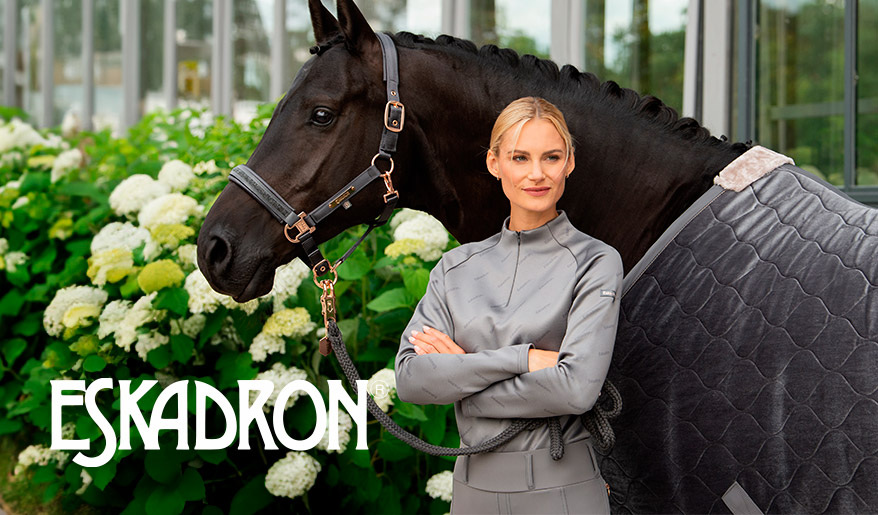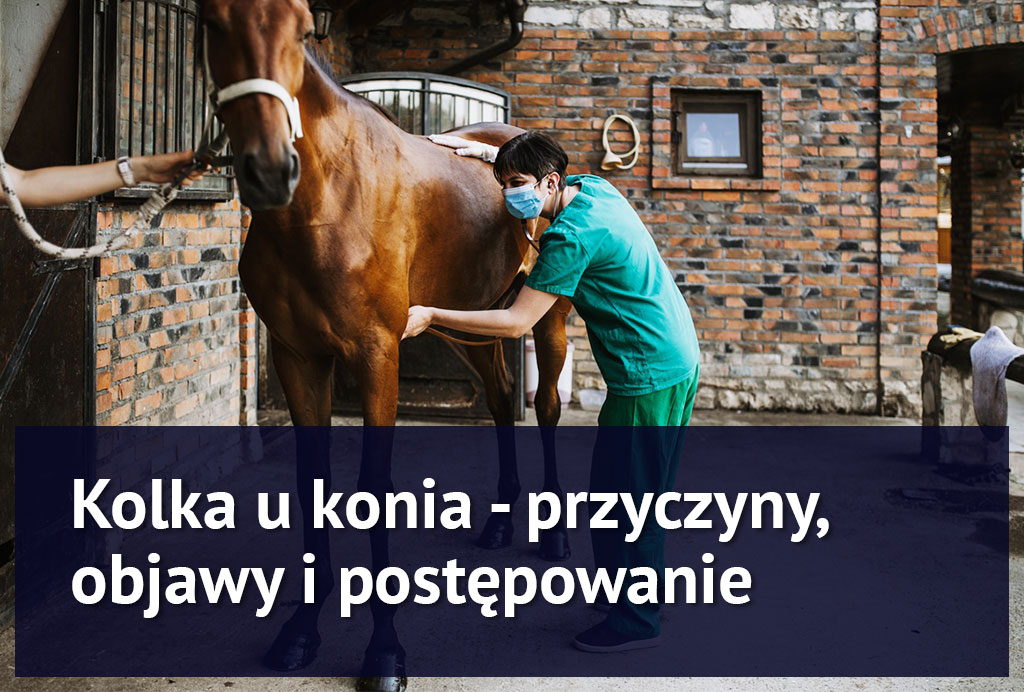
Konie posiadają bardzo delikatny układ pokarmowy i są one naturalnie podatne na związane z nim schorzenia, takie jak np. kolka, która występuje w jamie brzusznej. Każdy właściciel konia powinien znać czynniki sprzyjające jej powstaniu. Znajomość przyczyn, objawów i postępowania w przypadku morzyska jest kluczowa dla zapewnienia odpowiedniej pomocy cierpiącemu zwierzęciu.
Czym jest kolka u konia?
Kolka, zwana również morzyskiem, to zespół objawów wskazujących na ból narządów jamy brzusznej, najczęściej spowodowany schorzeniami przewodu pokarmowego. Zawiera się w niej wszystkie stany chorobowe żołądka, jelit, układu rozrodczego i moczowego powodujące ból. Każdy przypadek pojawienia się kolki wiąże się z bezpośrednim zagrożeniem życia i wymaga natychmiastowej interwencji lekarza weterynarii. Kolka u konia jest dość powszechnym zjawiskiem, a najważniejsza jest odpowiednia dieta i obserwacja zwierzęcia.
Jakie są przyczyny kolki?
Istnieje wiele przyczyn kolki u koni. Niektóre osobniki posiadają genetyczną skłonność do występowania morzyska. W takim przypadku wymagają one szczególnej obserwacji i opieki. Objawy kolki mogą być różne w zależności od jej rodzaju. Z tego powodu warto wiedzieć o wszystkich czynnikach wpływających na prawdopodobieństwo jej wystąpienia. Świadomy właściciel konia może nie tylko skutecznie zapobiegać pojawieniu się kolki, ale jest również w stanie udzielić właściwej i szybkiej pomocy cierpiącemu zwierzęciu.
Jedną z najczęściej przypisywanych przyczyn wystąpienia kolki u konia jest nagła zmiana diety. Wrażliwy i delikatny układ pokarmowy konia nie jest przystosowany do drastycznych zmian żywieniowych, dlatego mogą one wywołać silne bóle brzucha. Kolka układu pokarmowego może być również wywołane zbyt łapczywym i szybkim jedzeniem lub spożyciem przez konia czegoś, czego nie powinien zjeść. Ważnym czynnikiem, który zwiększa podatności na występowanie kolki u koni jest brak odruchu wymiotnego. W przypadku zjedzenia trującej rośliny lub zepsutej paszy koń nie potrafi jej zwrócić.
Przyczyną pojawienia się kolki może być również za mały odstęp czasowy między wysiłkiem fizycznym, a zjedzeniem posiłku. Po każdym rodzaju pracy z koniem zawsze należy odczekać minimum 45 minut z podaniem mu jedzenia. Podobnie jest w przypadku pojenia koni - napicie się zimnej wody przez rozgrzanego konia może doprowadzić do pojawienia się morzyska. Opiekun konia powinien tak planować trening, by koń mógł odpocząć przed posiłkiem.
Konie posiadają naturalną podatność na występowanie schorzeń pokarmowych w związku z mikroflorą i specyfiką ich układu pokarmowego oraz anatomią narządów układu trawiennego. Z powodu luźnego ułożenia jelit w jamie brzusznej konia występuje tendencja do skrętu jelit, która z kolei wymaga interwencji chirurgicznej. Dodatkowo w grupie wyższego ryzyka znajdują się klacze w ciąży, gdyż w jej trakcie zmienia się układ narządów i tym samym zwiększa się ryzyko pojawienia kolki.

Morzysko często obserwuje się u koni cierpiących na chorobę wrzodową przewodu pokarmowego. Ból żołądka i dwunastnicy spowodowany jest podrażnieniem uszkodzonej śluzówki przez kwas solny. Wraz z rozwojem owrzodzenia mogą nasilić się objawy kolkowe, które wcześniej miały słabe nasilenie i były niewidoczne dla właściciela konia. Przepisane przez lekarza weterynarii leki nie zapobiegają bezpośrednio wystąpieniu kolki. Do podrażnienia układu pokarmowego może także dojść na skutek długotrwałego podawania niesteroidowych leków przeciwzapalnych. Istotne jest również regularne kontrolowanie uzębienia konia, gdyż ostre krawędzie zębów utrudniają pobieranie paszy, czego skutkiem mogą być problemy układu pokarmowego.
Ważnym czynnikiem, który może wywołać bóle kolkowe jest stres. Najczęściej pojawia się on w przypadku nieodpowiedniego sposobu chowu koni, transportu lub zmiany w środowisku. Niezapewnienie podstawowych potrzeb konia, takich jak możliwość kontaktu z innymi końmi, całodobowy dostęp do wody i siana czy codzienne padokowania, może doprowadzić do wyżej wspomnianych wrzodów przewodu pokarmowego. Dodatkowo konie mogą kolkować w wyniku stresującego, długotrwałego transportu, wyjazdu na zawody czy ogólnej zmiany otoczenia.
Kolka u konia może pojawić się również poprzez zaniedbanie regularnego odrobaczania konia. Pasożyty mogą doprowadzić do wielu problemów zdrowotnych (w tym kolki) przez zatkanie jelita lub uszkodzenie błony śluzowej. W ustaleniu odpowiedniego programu odrobaczania koni może nam pomóc weterynarz, który szczegółowo rozpisze plan działania przeciwpasożytniczego. Ważne jest również utrzymanie prawidłowej higieny w stajni, aby zapobiec rozprzestrzenianiu się jaj robaków i zakażaniu innych koni.
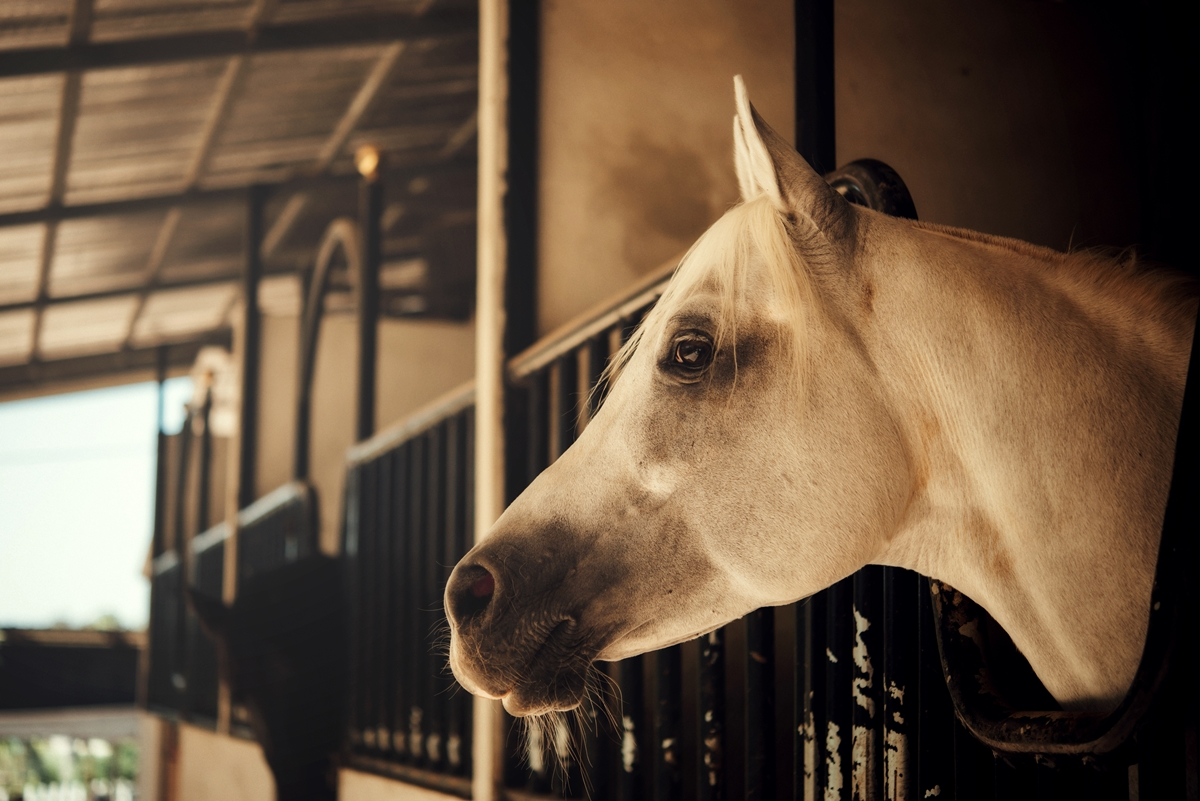
Rodzaje kolek u koni
Istnieje wiele rodzajów kolek u koni, gdyż różnią się one od siebie objawami oraz przyczynami. Do najczęściej występujących rodzajów kolek należą:
1. Kolka skurczowa, spazmatyczna
Najczęściej obserwuje się występowanie kolki skurczowej i dotyczy ona jelit oraz żołądka. Towarzyszą jej łagodne lub o średnim nasileniu objawy bólowe spowodowane skurczem. Zazwyczaj po podaniu leków rozkurczowych i przeciwbólowych szybko ustępują. W niektórych przypadkach kolki spazmatycznej może dojść do przemieszczenia, które wymaga interwencji chirurgicznej. Leczenie chirurgiczne rozpocznie się natychmiastowo po dowiezieniu konia do kliniki.
Istnieje wiele przyczyn morzyska skurczowego i szczególnie narażone na nie są konie wrażliwe, wrzodowe, podatne na stres lub konie z obniżoną odpornością. Kolka spazmatyczna może być spowodowana napiciem się zimnej wody przez rozgrzanego konia, polaniem zimną wodą konia, ogólnym osłabieniem, a także obecnością pasożytów wewnętrznych.
2. Zatkanie okrężnicy
Innym często spotykanym rodzajem kolki jest zatkanie okrężnicy. Najczęściej dochodzi do niego w skutek zwężenia jelit w miejscach zgięć i zwężeń. Może być ono następstwem kolki spazmatycznej. Zatkanie okrężnicy może także być spowodowane zarobaczeniem, spożyciem ciężkostrawnego pokarmu lub brakiem stałego dostępu do wody i paszy objętościowej.
Dodatkowo problemy z uzębieniem konia mogą doprowadzić do niewłaściwego przeżuwania pokarmu. Niestrawione i zablokowane jedzenie w przewodzie pokarmowym konia powoduje ogromny ból i jest niemożliwe do samodzielnego usunięcia. Najczęstszym postępowaniem w przypadku zatkania okrężnicy jest wprowadzenie przez sondę roztworu przeczyszczającego do układu pokarmowego. Zazwyczaj jest to parafina lub olej roślinny.
3. Kolka gazowa
Nagromadzenie się gazu w układzie pokarmowym może doprowadzić do kolki gazowej. Najczęściej spowodowana jest nadmiarem pokarmów łatwo fermentujących w diecie konia, takich jak jabłka czy koniczyna. Przyczyną może być również brak ruchu, gwałtowna zmiana diety, nadmiar paszy treściwej, problemy stomatologiczne oraz skarmianie zapleśniałym sianem lub zaparzoną trawą.
W wyniku zwiększającej się objętości gazu spowodowanej fermentacją bakterii w przewodzie pokarmowym dochodzi do rozciągnięcia ścian jelit. Widoczne jest powiększenie obwodu brzucha i w badaniu per rectum wyczuwalne jest rozdęte jelito grube. Cofnięcie się gazów do żołądka może również spowodować jego rozszerzenie. W ramach leczenia podaje się leki przeciwbólowe i zaleca rozchodzenie konia stępem. W sytuacji nieustąpienia objawów konieczna może być operacja, gdyż kolka gazowa może doprowadzić do skrętu jelit.
4. Rozszerzenie żołądka
Do rozszerzenia żołądka konia może dojść w przypadku spożycia paszy szybko fermentującej (np. jabłka, chleb lub koniczyna) lub pęczniejącej (np. suche wysłodki buraczane lub otręby pszenne). Może być ono również spowodowane niedokładnym przeżuwaniem pokarmu lub łapczywym jedzeniem. Zwiększająca się objętość żołądka naciska na przeponę i tym samym utrudnia oddychanie. Często obserwuje się przybieranie przez konia pozycji siedzącej "na psa", gdyż ułatwia im to oddychanie.
Sfermentowany pokarm następnie przemieszcza się do jelit i może doprowadzić do ich niedrożności, a nawet skrętów. Pojawienie i nasilenie się objawów ma szybki i intensywny przebieg. Konieczna jest natychmiastowa pomoc lekarza weterynarii, gdyż istnieje ryzyko pęknięcia żołądka, które prowadzi do śmierci konia. Najczęściej lekarz weterynarii zaleca leczenia oparte na podaniu leków przeciwbólowych, rozkurczowych i na wprowadzeniu sondy ze środkiem przeczyszczającym.
5. Zapalenia jelit
Zapalenie jelita może być spowodowane infekcją pasożytniczą, która uszkadza śluzówkę jelit i prowadzi do toksemii, czyli krążenia toksyn bakteryjnych we krwi. Obecność pasożytów może także doprowadzić do zakłócenia dopływu krwi do jelit. Za przyczynę zapalenia jelit uznaje się również zapiaszczenie, alergie, zakażenia grzybicze, zarażenie koronawirusem ECoV i inne choroby o podłożu idiopatycznym. Głównymi objawami są silne bóle i intensywne biegunki.
6. Kolka moczowa
Jest to dosyć rzadko występujący rodzaj kolki. Jej charakterystycznym objawem jest częste oddawanie moczu w małych ilościach, czasami z domieszką ropy lub krwi. Zdarza się, że towarzyszy temu gorączka. Przyczyny kolki moczowej mogą być różne, jednak najczęściej dochodzi do niej na skutek zapalenia cewki moczowej, kamicy moczowej, pęknięcia lub porażenia pęcherza.
7. Kolka nerkowa
Kolka nerkowa to zespół objawów towarzyszących niewydolności nerek. Może pojawić się w konsekwencji innych schorzeń kolkowych, posocznicy, zespołu nieszczelności jelita, krwotoków, a także w wyniku podania niektórych leków. W przypadku kolki nerkowej konieczne jest natychmiastowe wdrożenie leczenia, które zaleci lekarz weterynarii, gdyż może ona prowadzić do martwicy nerek.
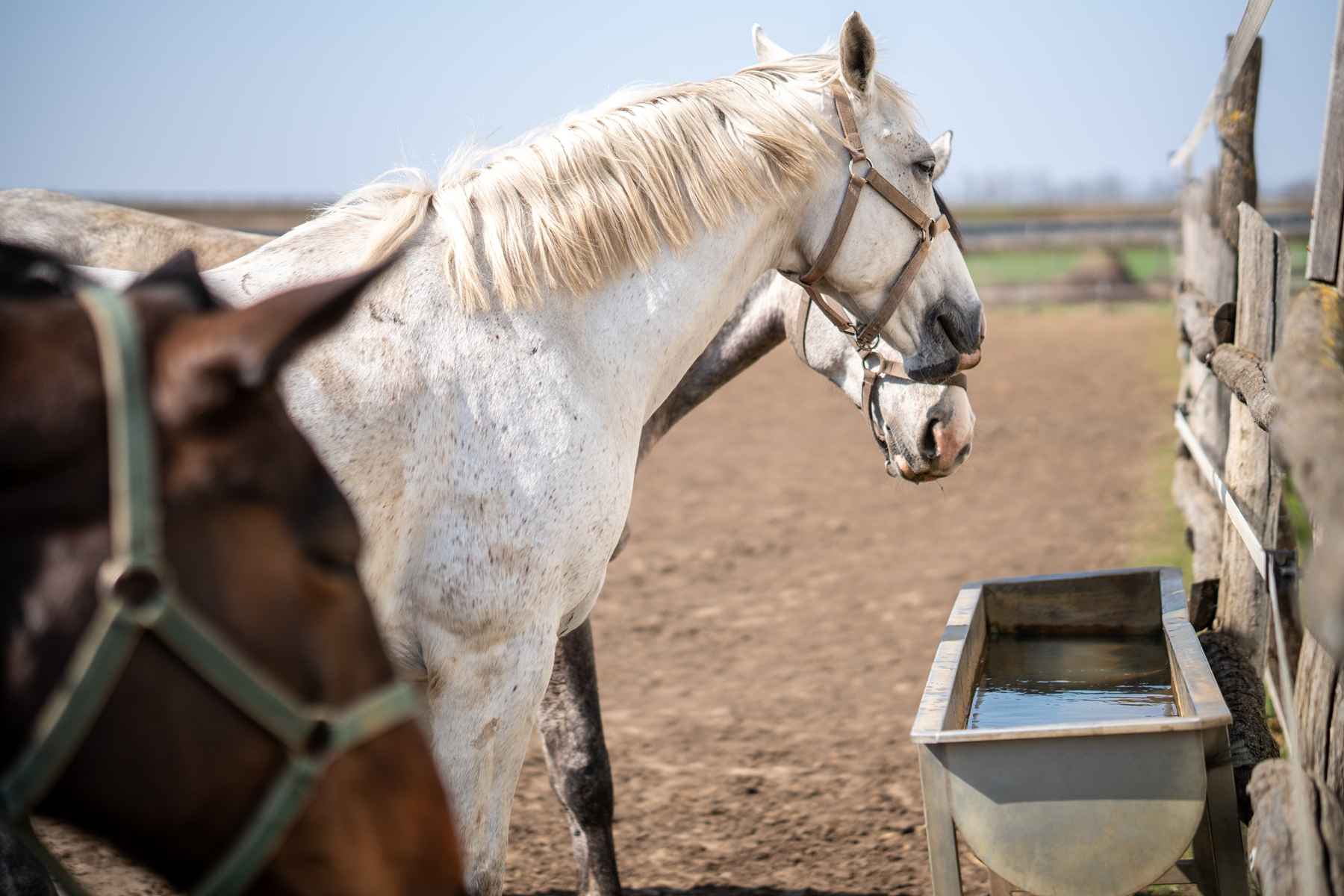
Jakie są objawy kolki?
Kolka u konia może się różnie objawiać w zależności od jej rodzaju. Wśród typowych zachowań występujących przy morzysku wyróżniamy:
brak apetytu i pragnienia
apatia
zwiększona potliwość
przyjmowanie pozycji ulgowych (pozycja przypominająca próbę oddawania moczu lub siedząca)
tarzanie lub kładzenie się
biegunka, niewielki rozmiar odchodów lub całkowity brak wypróżniania się
widoczny niepokój, nerwowość
kopanie w bok lub w okolice brzucha konia
zwracanie głowy/rozglądanie się na boki
pomiar tętna powyżej 45 uderzeń na minutę
przyspieszony oddech
zaczerwienienie, bądź żółcenie spojówek
powiększenie obwodu brzucha, wzdęcia
brak słyszalnych odgłosów pracy jelit w okolicy brzucha konia.
Różnicowanie rozpoznania kolki przewodu pokarmowego
W przypadku podejrzenia występowania morzyska przewodu pokarmowego należy wziąć pod uwagę choroby układu nerwowego. Diagnostyka różnicowa powinna zawierać również sprawdzenie danego przypadku pod kątem chorób układu moczowego, jak na przykład niedrożność dróg moczowych. Jako przyczynę warto również rozważyć choroby nowotworowe i choroby układu rozrodczego, takie jak skręt i ostre zapalenie macicy lub bolesności jajników związane z okresem okołoowulacyjnym.
Co robić podczas kolki u konia?
Po zaobserwowaniu objawów morzyskowych konieczne jest natychmiastowe skontaktowanie się z lekarzem weterynarii w celu jak najszybszego udzielenia pomocy choremu zwierzęciu. W trakcie rozmowy należy dokładnie opisać występujące objawy kolki i okoliczności jej pojawienia się, a także zastosować się do zaleceń lekarza. Do jego przyjazdu należy monitorować tętno, temperaturę, liczbę oddechów i kolor dziąseł konia.
Dodatkowo zaleca się oprowadzanie konia stępem i uniemożliwienie mu tarzania się, gdyż może to doprowadzić do skrętu jelit. Za pozwoleniem weterynarza można delikatnie masować brzuch lub zastosować inne metody relaksacyjne. Nie wolno podawać kolkującemu koniowi niczego do jedzenia, jednakże dozwolone jest picie wody.
Leczenie
Każda kolka u konia stanowi bezpośrednie zagrożenie życia. Sposób leczenia jest zależny od jej rodzaju. Ze względu na dużą ilość możliwych przyczyn morzyska szczegóły leczenia są ustalane dopiero po wywiadzie rozpoznawczym lekarza weterynarii. Priorytetem jest ocena zagrożenia życia zwierzęcia. Najczęściej podaje się leki rozkurczowe oraz przeciwzapalne, a w przypadku niedrożności wykonuje się sondowanie.
Poza terapią zachowawczą może się okazać konieczne operacyjne leczenie, które jest najskuteczniejszą metodą leczenia. Z tego powodu warto wcześniej zrobić rozeznanie wśród klinik wykonujących takie zabiegi. Statystycznie w 90 % przypadkach konie z ostrą niedrożnością jelit przeżywają operację, gdy leczenie chirurgiczne zostanie wdrożone do 6 godzin od momentu pojawienia się ostrych objawów morzyska. Każda dodatkowa godzina zmniejsza szanse przeżycia konia o około 10%.
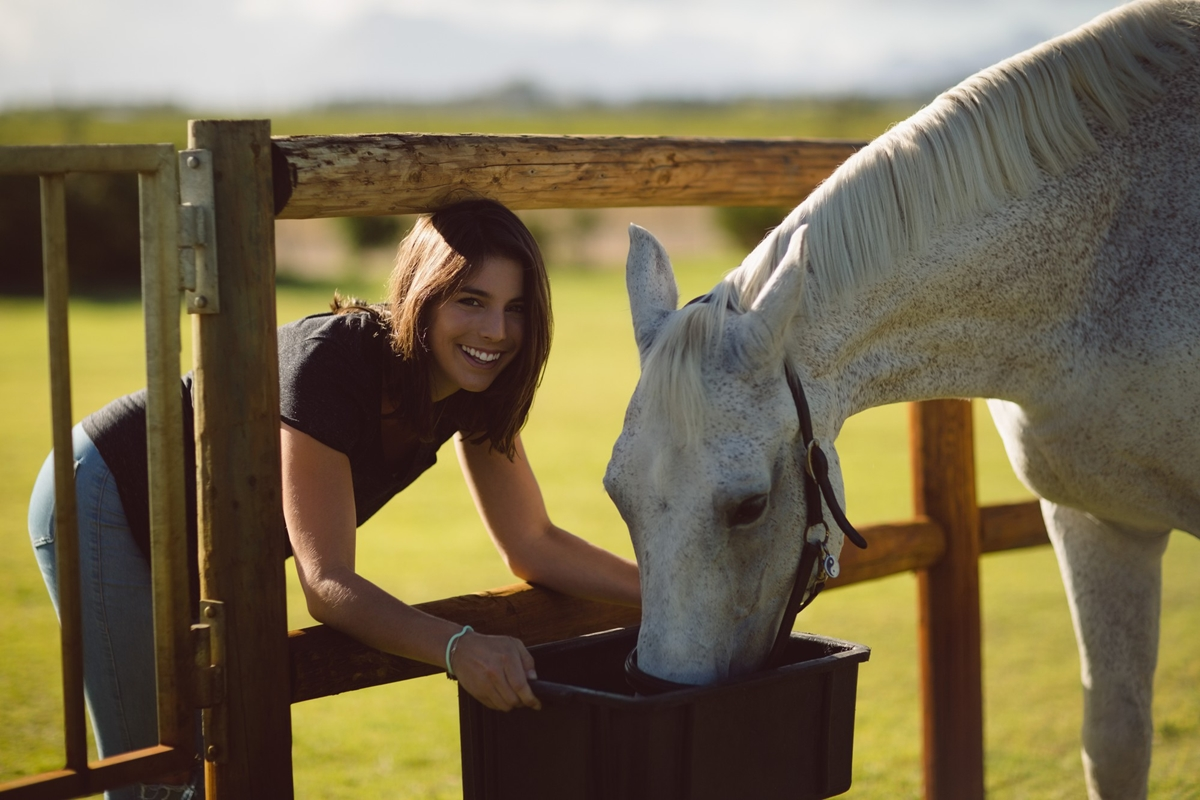
Profilaktyka
Podstawą zapobiegania kolkom u koni jest prawidłowa opieka i zapewnienie im odpowiednich warunków chowu. Koń powinien mieć całodobowy dostęp do dobrej jakości siana i świeżej wody. Najlepiej jest rozmieścić bele siana na padokach w różnych miejscach, gdyż takie rozwiązanie zachęca zwierzęta do chodzenia i jest najbardziej zbliżone do ich naturalnego środowiska wypasu. Dodatkowo koń powinien mieć zapewnioną możliwość swobodnego ruchu poprzez codzienne padokowanie w towarzystwie innych osobników swojego gatunku.
Stado konia powinno być staranie dobrane pod względem cech charakteru, gdyż brak sympatii może doprowadzić do walk o zasoby i silnego stresu. Brak dostępu do pożywienia skutkuje gromadzeniem się kwasu solnego w żołądku, co końcowo może wywołać chorobę wrzodową. Koń pozbawiony dostępnej całodobowo paszy, może zachłannie się na nią rzucać w porach karmienia. Takie zachowanie powoduje gromadzenie się dużej ilości gazu w układzie pokarmowym, a niestarannie przeżuta pasza może doprowadzić do niedrożności jelit.
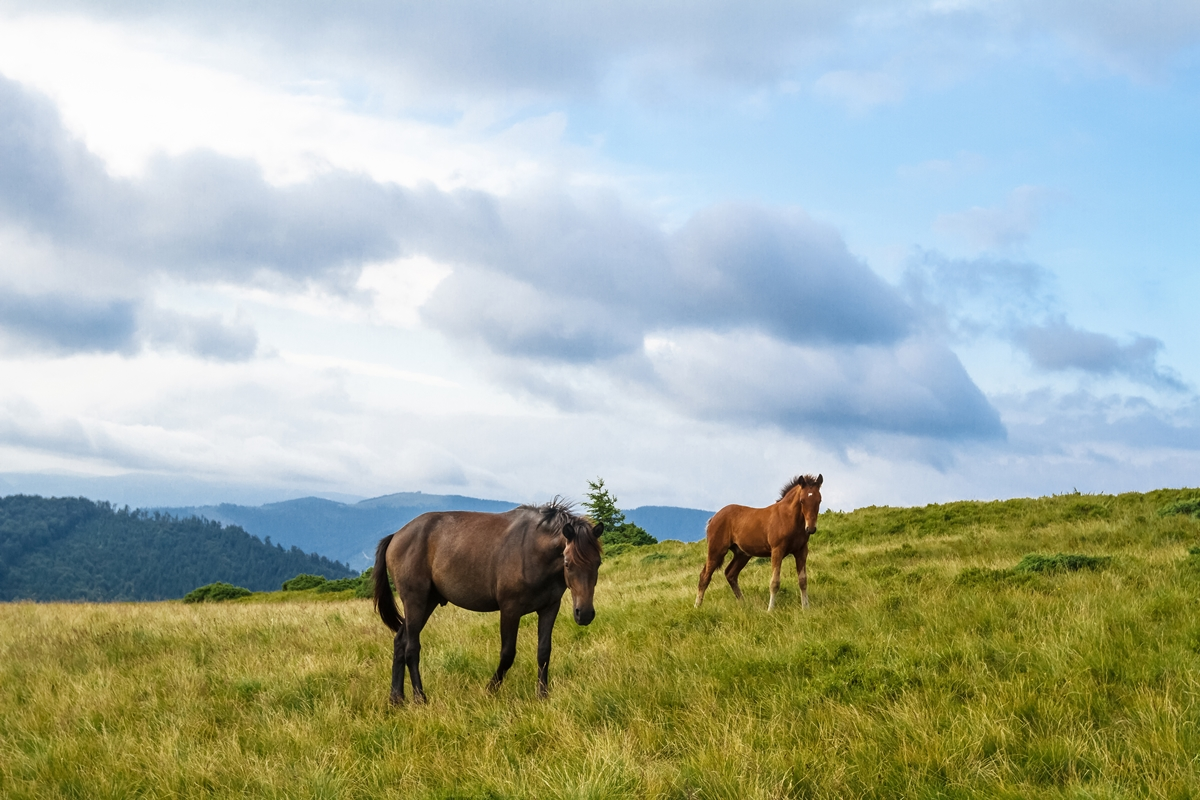
Ważnymi taktykami profilaktycznymi są: ustalenie stałych pór karmienia paszą treściwą, jej prawidłowe zbilansowanie i objętość, a także stałe pory treningów. W przypadku złych warunków pogodowych można założyć koniowi derkę i skrócić czas pobytu na dworze, jednak zaleca się mimo wszystko zachowanie codziennej rutyny. Koń nigdy nie powinien być zostawiany sam w stajni, podczas gdy reszta stada przebywa na dworze. Takie sytuacje narażają go na duży stres i dyskomfort psychiczny.
Konie trzymane wolnowybiegowo powinny mieć dostęp do przestronnych wiat, które będą pełniły formę ochrony przed wiatrem i deszczem. Koniom osłabionym, wymagającym regeneracji należy zapewnić miejsce odpoczynku umożliwiające im spokój i poczucie bezpieczeństwa. Należy pilnować również stosowania się do regularnego harmonogramu odrobaczania odpowiednimi środkami czynnymi. Konieczne jest, także rutynowe kontrolowanie uzębienia przez specjalistę. Wiosną i jesienią zaleca się regularne odpiaszczanie koni łuską psyllium.
*Każde zmiany żywieniowe oraz zaobserwowane nietypowe lub niepokojące zachowania konia należy najpierw konsultować z lekarzem weterynarii.
Koniecznie zadbaj o odpowiednią dietę i suplementację swojego konia. Sprawdź dział: Pasza i suplementy dla konia.
Sklep jeździecki: +48 784 039 784
Dział siodeł: +48 606 914 300
E-mail: kontakt@equishop.com
Aktualności ze sklepu jeździeckiego Equishop:












